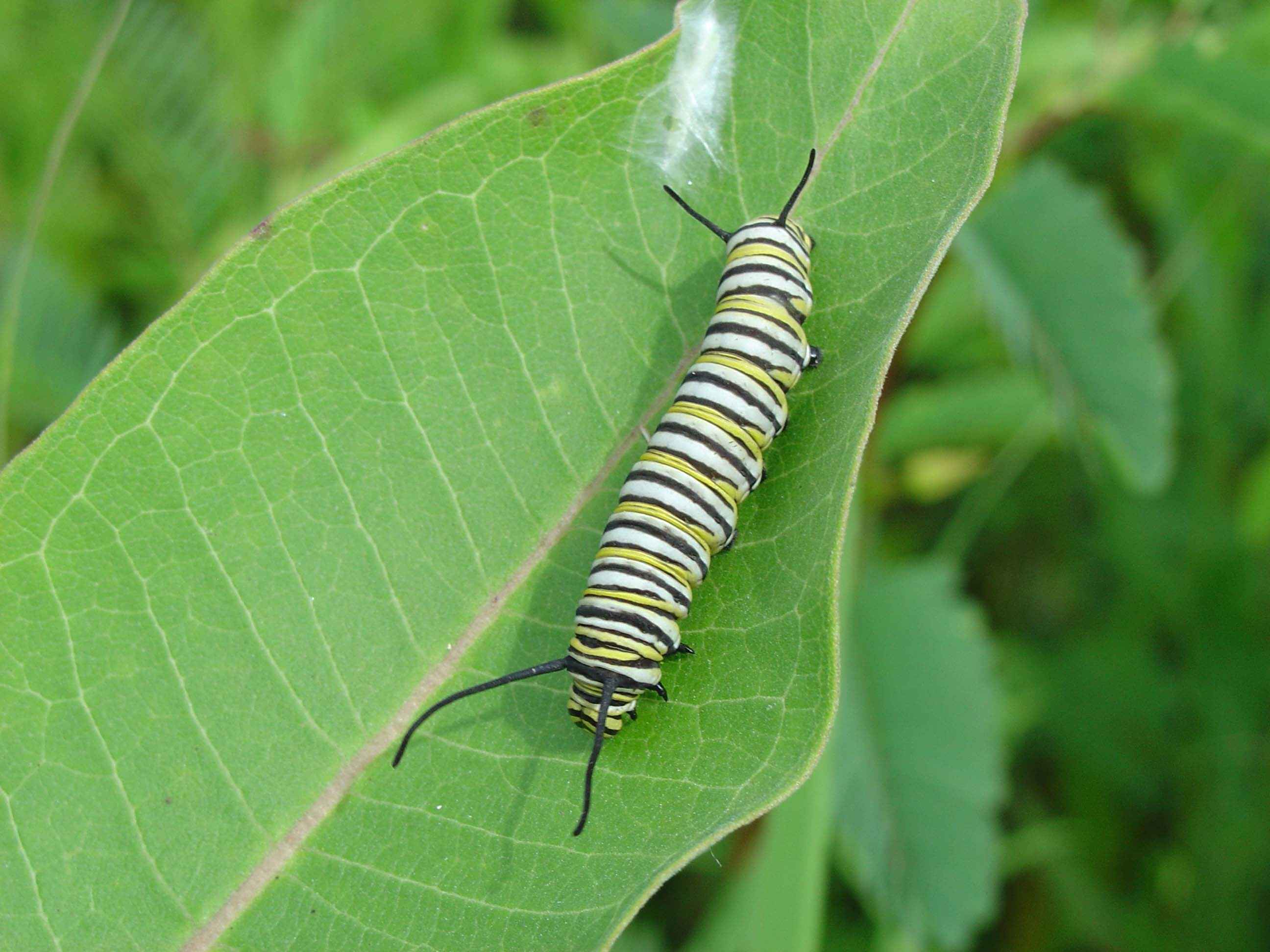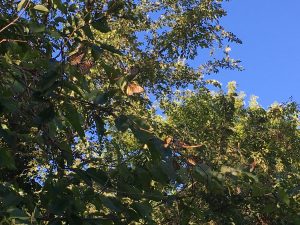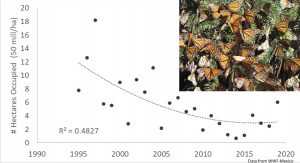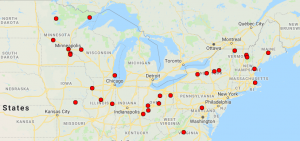Milkweed Adaptation Research and Education Network
Contact: Professor Emily Mohl, mohl@stolaf.edu , Regents Hall of Natural Science 432.
- Visit marenweb.com to learn more about this project.
- We expect to have funding to hire students to help with this research during the semester and during CURI in the summer in 2020-2022. Check the student work website and CURI for details.
- In January 2020, we need lots of help preparing milkweed seeds for study. You are invited to learn more about the project and help out in RNS 423 on MWF 2-4:15. Drop in as you are able.
Background
Have you ever seen monarchs roosting in the trees as they migrate to Mexico? This moving phenomenon may be at risk.
Monarch populations in Mexico have been declining for decades. While scientists debate why, many groups across the country are mobilizing to plant milkweed. Why?
M onarch caterpillars only eat one kind of plant–milkweed. What is important to understand about this plant as we aim to restore habitat for monarchs? This is the focus of our research.
onarch caterpillars only eat one kind of plant–milkweed. What is important to understand about this plant as we aim to restore habitat for monarchs? This is the focus of our research.
Research
This project investigates local adaptation in common milkweed, Asclepias syriaca, one of the most important food sources for monarchs. In particular, we ask whether local populations of milkweeds outperform nonlocal populations. Alternatively, certain populations may outperform other populations everywhere. Understanding these patterns should help us make better decisions about how to manage and plant milkweed populations.
We are engaging educators and students in a replicated, distributed investigation of local adaptation. Participating institutions are distributed across the range of common milkweed.
Participants collected seeds from naturally occurring local populations of Asclepias syriaca (common milkweed) in the fall of 2017, and then they established experimental plots with about 20 milkweed plants, some from their local area, and some from distant populations. For the next years, they will measure and record data on milkweed growth and herbivory annually in the spring and fall (and optionally during the summer) to determine whether local populations perform better in general.
Now, we are expanding the project to plant many seeds in larger gardens at three locations so that we can try to identify which factors are contributing to milkweed adaptation. Our results should help us predict the impacts of moving milkweed to new locations.
One of the unique aspects of the project is that all participants can access datasets for use in their classes and contribute to publications.
The map below shows the distribution of current participants.
Teaching
We have also developed a series of lesson plans to motivate the project and support student learning in connection with the Next Generation Science Standards. They are shared with project participants and available to others on request.
| Lesson | Theme | Activities |
| 1. Monarchs and their Decline | Introduction to monarch life cycle and population decline | Brainstorming, role playing |
| 2. Monarch Population Decline Debate | Multiple hypotheses for population decline | Read research article, guided debate |
| 3. Milkweed | Milkweed traits and measurements | Stations to learn about milkweed, discuss the lab |
| 4. Evolutionary Principles | Learn/review evolutionary processes, connect to predictions about milkweed adaptation | Guided worksheet with video, vocab review, identify questions/predictions for lab |
| 5. Data Analysis | Using data to answer questions/test predictions | Data entry, visualize and interpret data |
| 6. Applying Local Adaptation | Apply learning: is it risky to plant non-local milkweed? | Evaluate risks, scientific argumentation |
| 7. Citizen Science | Share arguments and evidence with the community | Data jam |
Expanding
We are expanding the project to include opportunities for collecting observational data. Some of our main findings indicate that phenology is important for understanding milkweed adaptation, so we’ve developed new protocols that participants can use to measure and record the timing of milkweed growth and interactions at sites around the country. If you’d like to be a part of this project, please visit marenweb.com to learn more!



